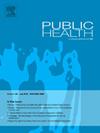非洲区域人口和流行病学转变的比较分析:对公共卫生的政策影响
IF 3.2
3区 医学
Q1 PUBLIC, ENVIRONMENTAL & OCCUPATIONAL HEALTH
引用次数: 0
摘要
人口和流行病学的变化重新定义了全球公共卫生的优先事项。非洲正在经历一场前所未有的人口和流行病学变革,对公共卫生产生影响。本研究旨在对非洲不同地区的这些转变进行比较分析。这是一项观察性描述性研究,该研究利用了世界银行和全球疾病负担数据库的二手数据,分析了2000年至2019年非洲的人口和流行病学趋势。方法本研究利用来自世界银行和全球疾病负担数据库的二手数据,分析2000年至2019年非洲的人口和流行病学趋势。该分析是在区域基础上进行的,将非洲分为北部、西部、中部、东部和南部地区。从世界银行的开放数据库中提取1960-2020年的出生率、死亡率和预期寿命,并使用死亡率数据和残疾调整生命年(DALY)从1990-2019年的全球疾病负担(GBD)研究中提取疾病负担,分类为传染病(cd)、非传染性疾病(NCDs)和伤害。结果人口统计学和流行病学转变差异显著。北非的出生率下降(1960年为50 / 1000,到2020年为20 / 1000),而人口增长在东非最为显著(7000 - 3.3亿)。流行病学转变表明,所有区域从非传染性疾病向非传染性疾病转变。在北非,非传染性疾病有所下降,而非传染性疾病有所增加(非传染性疾病死亡人数从1990年的279,529人增加到2019年的95,491人;CD DALYs: 2590万至750万;非传染性疾病死亡人数:513,284至923,619人;非传染性疾病伤残调整年:2520万至3960万)。相比之下,非洲其他国家在减少cd方面的进展较为缓慢。在南部非洲,在2000年与CD相关的死亡达到高峰之后,CD的负担下降了,今天,CD和非传染性疾病之间的疾病负担几乎平均分配(CD死亡:754,169;非传染性疾病死亡:2019年543,419人)。结论:这些发现表明,有必要在整个非洲制定特定区域的公共卫生战略。北部和南部非洲应优先考虑非传染性疾病的预防和管理,并采取早期发现、护理和生活方式干预措施。西非和中非需要持续的传染病控制,加强疫苗接种、获得治疗和监测,同时还要处理日益增加的非传染性疾病负担。本文章由计算机程序翻译,如有差异,请以英文原文为准。
A comparative analysis of Africa's regional demographic and epidemiological transitions: Policy implications for public health
Objectives
Demographic and epidemiological changes have redefined public health priorities globally. Africa is undergoing an unprecedented demographic and epidemiological transformation with implications for public health. This study aims to provide a comparative analysis of these transitions across different African regions.
Study design
This is an observational descriptive study based on study utilizes secondary data from the World Bank and the Global Burden of Disease database to analyze demographic and epidemiological trends in Africa from 2000 to 2019.
Methods
This study utilizes secondary data from the World Bank and the Global Burden of Disease database to analyze demographic and epidemiological trends in Africa from 2000 to 2019. The analysis is conducted on a regional basis, categorizing Africa into Northern, Western, Central, Eastern, and Southern regions. Birth rates, death rates, and life expectancy were extracted from the World Bank's open database for the years 1960–2020, and disease burden, categorized as communicable diseases (CDs), non-communicable diseases (NCDs) and injuries, were extracted from the Global Burden of Disease (GBD) study for the years 1990–2019 using both mortality data and disability adjusted life years (DALY).
Results
Demographic and epidemiological transitions varied significantly. Northern Africa saw birth rates decline (50 per 1000 in 1960 to 20 in 2020), while population growth was most pronounced in Eastern Africa (70–330 million). The epidemiological transition showed a shift from CDs to NCDs across all regions. In Northern Africa, there was a decline in CDs, while NCDs increased (CD deaths: 279,529 in 1990 to 95,491 in 2019; CD DALYs: 25.9 million to 7.5 million; NCD deaths: 513,284 to 923,619; NCD DALYs: 25.2 million to 39.6 million). In contrast, the rest of Africa experienced slower progress in reducing CDs. In Southern Africa, after the peak of CD-related deaths in 2000, the burden of CDs declined, and today the disease burden is almost evenly split between CDs and NCDs (CD deaths: 754,169; NCD deaths: 543,419 in 2019).
Conclusion
These findings suggest the need for region-specific public health strategies across Africa. Northern and Southern Africa should prioritize NCD prevention and management, with early detection, care, and lifestyle interventions. Western and Central Africa require sustained infectious disease control, reinforcing vaccination, treatment access, and surveillance, while also addressing the rising burden of NCDs.
求助全文
通过发布文献求助,成功后即可免费获取论文全文。
去求助
来源期刊

Public Health
医学-公共卫生、环境卫生与职业卫生
CiteScore
7.60
自引率
0.00%
发文量
280
审稿时长
37 days
期刊介绍:
Public Health is an international, multidisciplinary peer-reviewed journal. It publishes original papers, reviews and short reports on all aspects of the science, philosophy, and practice of public health.
 求助内容:
求助内容: 应助结果提醒方式:
应助结果提醒方式:


